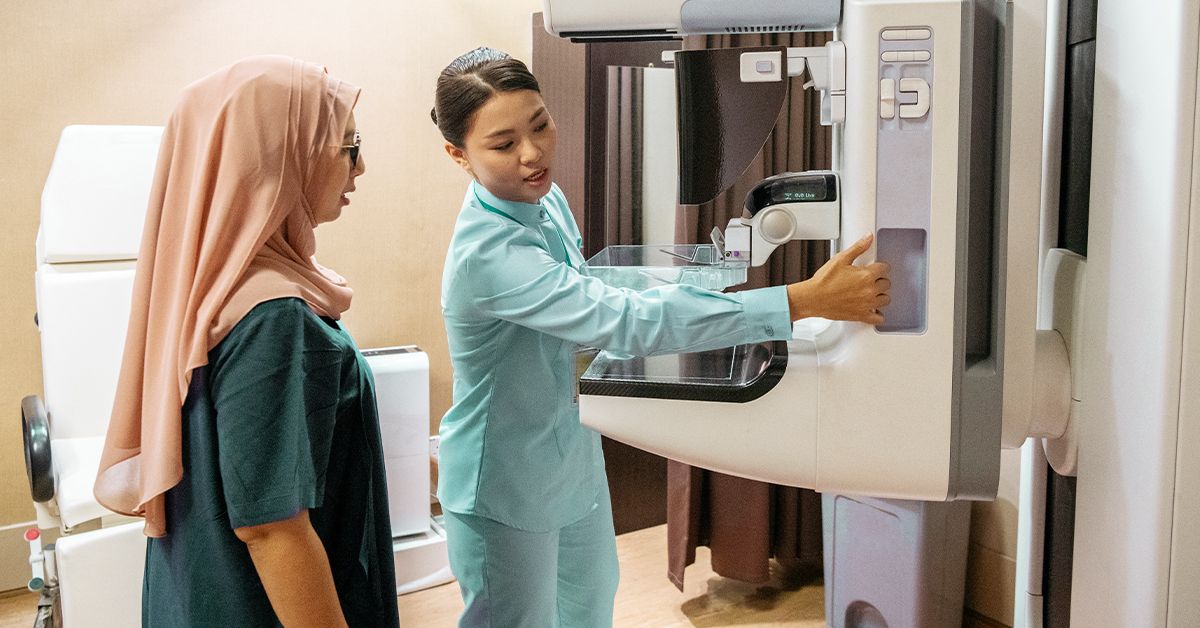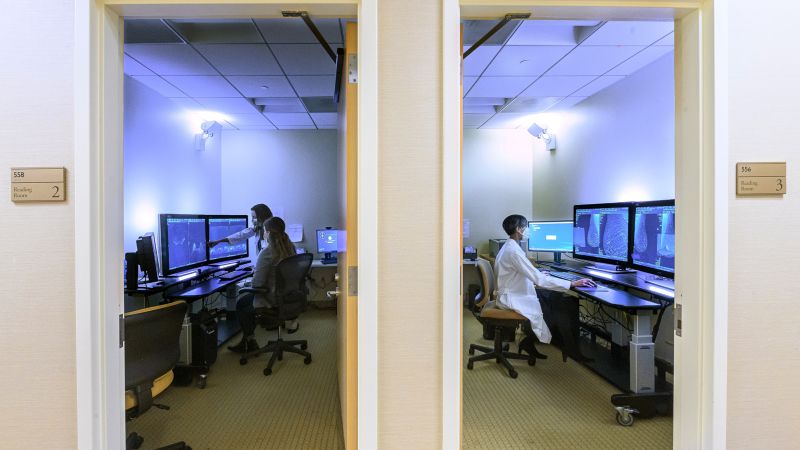As of September 10, 2024, the FDA mandates that all mammography reports include detailed information about breast density. This amendment to the Mammography Quality Standards Act (MQSA) applies to all mammogram facilities. The goal is to inform individuals if they have dense breasts and explain how this impacts cancer detection.

Also Read: High Levels of Lead Detected in 12 Cinnamon and Spice Brands
Breast density refers to the amount of fibroglandular tissue (which includes milk ducts and connective tissue) compared to fatty tissue in a woman’s breasts.
Higher breast density means more fibroglandular tissue and less fat tissue. It’s important to note that breast density cannot be determined by the size, shape or feel of a woman’s breasts.
Dr. Carolyn Malone, a radiologist at Hackensack University Medical Center addresses that breast density is inherent to each individual and is not affected by lifestyle factors such as diet or exercise. However, breast density can decrease as women age particularly after menopause.
About 50% of women have dense or extremely dense breasts, according to the Memorial Sloan Kettering Cancer Center. These women may be at a higher risk for breast cancer.
Does Having Dense Breasts Increase Cancer Risk? Yes, women with dense breasts have a higher chance of developing breast cancer.
Cancer typically forms in the fibroglandular tissue, which means the more fibroglandular tissue present, the higher the opportunity for cancer to develop. The Centers for Disease Control and Prevention says that breast density is a major factor in cancer risk.
Mammograms are a critical tool for detecting breast cancer, but their decreases with higher breast density. Fatty tissue appears dark or black on a mammogram, making it easier to identify abnormal growths.
Fibroglandular tissue appears white, just like cancerous tissue, making it difficult to spot tumors. This scenario has been likened to looking for a snowball in a field of snow, according to Teri Thomas, CEO of Volpara Health.
Mammograms may not be sufficient for women with dense breasts. In such cases, healthcare providers may recommend further screening such as a breast ultrasound or magnetic resonance imaging (MRI).
These methods are more sensitive than mammograms in detecting cancer especially in dense breast tissue. However, these tests are not part of routine screenings due to their higher cost and the potential for false positives, which could lead to unnecessary worry or procedures.
One of the critical issues surrounding additional testing for women with dense breasts is insurance coverage. While the Affordable Care Act ensures that routine mammograms are covered by private insurance, coverage for supplemental screenings like ultrasounds or MRIs is inconsistent across states.
Some insurance plans require prior authorization from healthcare providers, while others may mandate that patients meet their deductible before covering these costs.
Without insurance coverage, the financial burden could lead many women to delay essential follow-up testing, which may impact their breast cancer prognosis.
The new FDA regulation standardizes the way mammogram facilities report breast density across the country. Women will now see more detailed information about their breast density on their mammogram reports, which will categorize breast tissue from almost entirely fatty to extremely dense.
This assessment will also include an explanation about how dense breast tissue can make it harder to detect cancer and the associated risks.
Before the FDA ruling, 39 states and Washington DC had their own mandates for notifying patients about breast density. Now, the FDA’s national requirement creates a uniform standard that all women across the US receive the same information about their breast density.
The rule stops short of mandating specific follow-up actions for women with dense breasts, leaving those decisions up to the healthcare provider and patient.
Although routine mammograms are covered under the ACA, coverage for additional tests like ultrasounds and MRIs varies greatly depending on the state and individual insurance plans.
The cost of an ultrasound may be several hundred dollars, while an MRI could cost around $1,000. As a result, many women with dense breasts might delay or forgo testing due to the expense.
Also Read: NHS Must Reform or Die, Warns PM After Report on Health Service Crisis
Policymakers are working to address the gaps in insurance coverage. The Find It Early Act introduced in Congress in May 2023 seeks to ensure that women with dense breasts have full insurance coverage for supplemental screenings.
This legislation has gained support from numerous medical organizations including the American Cancer Society and the American College of Surgeons.
Teri Thomas, whose company endorsed the bill highlights the necessity of this change, stating that the US lags behind other high-income countries that already provide coverage for these tests.
Thomas believes that this additional testing is medically necessary and could save lives by catching cancers that mammograms might miss.
JoAnn Pushkin, a breast cancer survivor and executive director of DenseBreast-info has been a vocal advocate for including breast density information in mammogram reports.
Despite getting regular mammograms, Pushkin’s cancer went undetected because of her dense breast tissue. By the time she discovered a lump, her cancer had progressed to a later stage. Pushkin has since undergone multiple surgeries and treatments, and she continues to advocate for better screening practices.
Early detection of breast cancer is important for successful treatment. According to the National Breast Cancer Foundation, the five-year survival rate for early-stage breast cancer is 99%.
For cancers detected at a more advanced stage (stage 3), the survival rate drops to 86%. Delayed detection due to dense breast tissue could mean the difference between life and death for many women, which is why Pushkin and other advocates have been pushing for this new regulation.
Potential Causes of Breast Density
- Diet: A diet high in fat, sugar, and red meat may increase the risk of dense breast tissue.
- Body Mass Index (BMI): Women with lower BMI tend to have denser breasts.
- Pregnancy and Nursing: Breast density is often higher during pregnancy and nursing, though women who have had children generally have a lower lifetime risk of breast cancer compared to those who have not.
- Medications: Hormone replacement therapy (HRT) can increase breast density.
- Age: Younger women generally have denser breasts than older women.
- Genetics: Breast density is hereditary, meaning family history can influence whether a woman has dense breasts.
What Can You Do If You Have Dense Breasts
- Prioritize fruits, vegetables, whole grains, and lean proteins while limiting processed foods, sugar, and red meat.
- Aim for at least 150 minutes of aerobic exercise each week.
- Studies have shown that alcohol consumption increases the risk of breast cancer.
- Smoking is a known risk factor for several types of cancer, including breast cancer.
- Obesity increases the risk of breast cancer, especially after menopause.
- If you require HRT, work closely with your doctor to evaluate the risks and benefits. Long-term HRT usage can increase breast density and cancer risk.
- Make sure to receive regular mammograms, and discuss with your doctor if additional screening methods are necessary based on your breast density and overall risk factors.
- Knowing your genetic risk, especially for BRCA1 and BRCA2 mutations, can help guide your screening and prevention strategies.
Also Read: E-Cigarette Use Among Youth in the US Hits Lowest Level in a Decade






:max_bytes(150000):strip_icc()/Health-GettyImages-697570355-04ca0769eb40492f850628f2998e7c0d.jpg)















